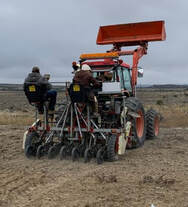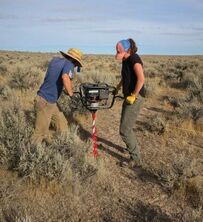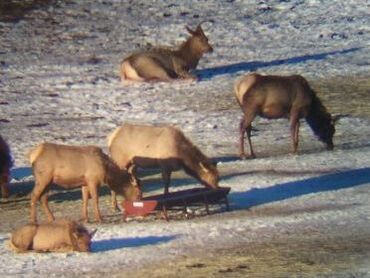|
What governs restoration successes and failures?
The agency personnel and private landowners with whom we work are skilled and knowledgeable restoration practitioners, but their efforts can nonetheless be hampered by factors such as drought, weeds, and lack of ecological information. In our research we aim to understand what governs past failures and successes, work with practitioners to improve current practices, and improve our understanding of the ecology of the systems being restored. Examples of our projects include: 1) using state-wide data maintained by the Utah Watershed Restoration Initiative (WRI) to retrospectively investigate the outcomes of widely-used landscape-scale restoration approaches across different vegetation types and landscape factors; 2) working with the Utah Division of Wildlife Resources to test how the inclusion of high-performing introduced grasses (e.g., crested wheatgrass) in restoration seed mixes affects restoration outcomes; and 3) collaborating with Dr. Tom Monaco at the USDA-ARS Forage and Range Research Laboratory to test how different plant materials, like varieties of bluebunch wheatgrass, perform in restoration settings. |
Another important element of our research in this subject area addresses the strategic placement of these high input plantings across the landscape. At a mountain sagebrush site in southeastern Idaho, we are testing the efficacy of concentrating restoration efforts into the establishment of sagebrush ‘islands (rather than more diffusely across the landscape). On the Colorado Plateau, we have found that targeting sagebrush plantings in areas of the landscape characterized by coarser, shallower soils improves restoration success, and we are continuing to investigate how mature sagebrush and the rest of the plant community respond to these landscape factors.
|
|



